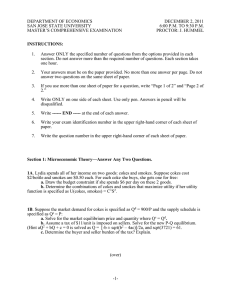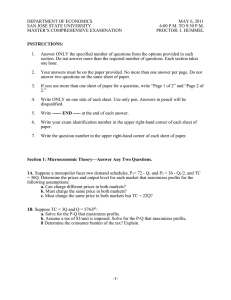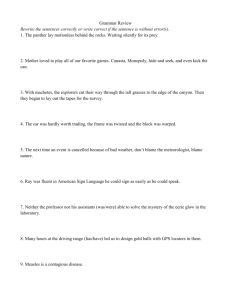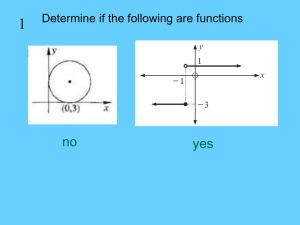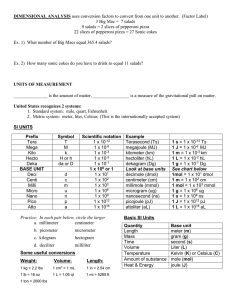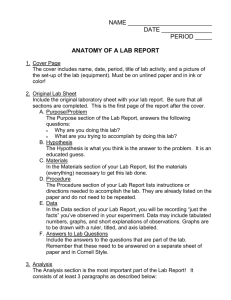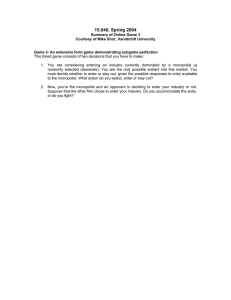DEPARTMENT OF ECONOMICS MAY 4, 2012 SAN JOSE STATE UNIVERSITY
advertisement
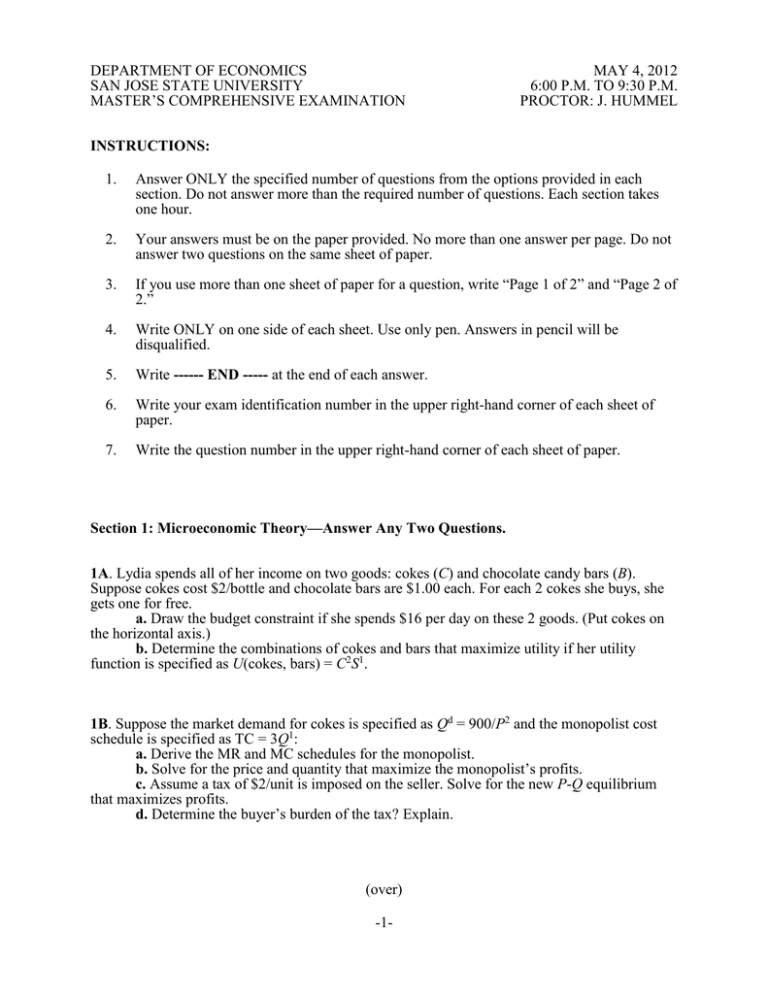
DEPARTMENT OF ECONOMICS SAN JOSE STATE UNIVERSITY MASTER’S COMPREHENSIVE EXAMINATION MAY 4, 2012 6:00 P.M. TO 9:30 P.M. PROCTOR: J. HUMMEL INSTRUCTIONS: 1. Answer ONLY the specified number of questions from the options provided in each section. Do not answer more than the required number of questions. Each section takes one hour. 2. Your answers must be on the paper provided. No more than one answer per page. Do not answer two questions on the same sheet of paper. 3. If you use more than one sheet of paper for a question, write “Page 1 of 2” and “Page 2 of 2.” 4. Write ONLY on one side of each sheet. Use only pen. Answers in pencil will be disqualified. 5. Write ------ END ----- at the end of each answer. 6. Write your exam identification number in the upper right-hand corner of each sheet of paper. 7. Write the question number in the upper right-hand corner of each sheet of paper. Section 1: Microeconomic Theory—Answer Any Two Questions. 1A. Lydia spends all of her income on two goods: cokes (C) and chocolate candy bars (B). Suppose cokes cost $2/bottle and chocolate bars are $1.00 each. For each 2 cokes she buys, she gets one for free. a. Draw the budget constraint if she spends $16 per day on these 2 goods. (Put cokes on the horizontal axis.) b. Determine the combinations of cokes and bars that maximize utility if her utility function is specified as U(cokes, bars) = C2S1. 1B. Suppose the market demand for cokes is specified as Qd = 900/P2 and the monopolist cost schedule is specified as TC = 3Q1: a. Derive the MR and MC schedules for the monopolist. b. Solve for the price and quantity that maximize the monopolist’s profits. c. Assume a tax of $2/unit is imposed on the seller. Solve for the new P-Q equilibrium that maximizes profits. d. Determine the buyer’s burden of the tax? Explain. (over) -1- DEPARTMENT OF ECONOMICS SAN JOSE STATE UNIVERSITY MASTER’S COMPREHENSIVE EXAMINATION MAY 4, 2012 6:00 P.M. TO 9:30 P.M. PROCTOR: J. HUMMEL 1C. A firm is a price-taker in the labor market. The firm wants to choose the optimal level of labor to maximize profit. Let W be the unit price of labor, and assume that labor cost is the only cost of production: a. Write the objective function in terms of L(labor). Hint: Use TR = TR[Q(L)] for total revenue. b. Derive the first order condition (FOC) for profit-maximization in mathematical notations. c. Derive the second order condition (SOC) for profit-maximization in mathematical notations. d. Explain the economic meaning of the FOC and the SOC graphically and verbally. -2-
